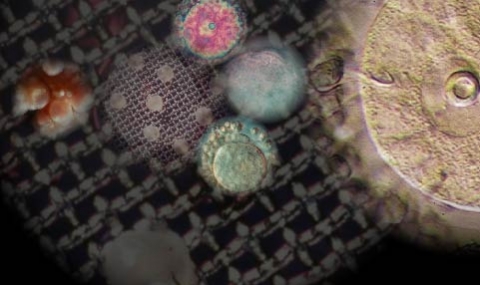spontaneous maturation of isolated cumulus-enclosed oocytes (CEO) in culture led Pincus and Enzmann (1935) to suggest that follicle cells somehow inhibit the resumption of meiosis. We have tested this assumption by co-culture of porcine cumulus-enclosed oocytes (CEO) with other follicular constituents, such as porcine follicular fluid (PFFI), granulosa cells or ovarian theca-somatic tissue.
In collaboration with Cornelia (Nina) Channing and Seymour Pomerantz of the University of Maryland, we have demonstrated an inhibitory activity present in pFFL, its low molecular weight fraction (PpFFl) and GC-conditioned medium. We have related to this activity as oocyte maturation inhibitor (OMI). This inhibition was even stronger and dose dependent when the oocytes (CEO) were added to cultures of granulosa cell from medium-sized (3-5mm in diameter) follicles (oocyte-granulosa cell co-cultures) (14,19,20). LH could not overcome OMI action in co-culture of porcine CEO with these GC (Fig. 7). Yet, addition of LH to cultures of CEO with pFFl or PpFFl overcame their inhibitory action. Most probably, the failure of porcine CEO-GC co-cultures to respond with meiotic resumption was due to the immaturity of the GC from medium-sized follicles. The inhibitory effects of GC or their secretions was effective only in CEO cultures but did not affect spontaneous maturation of denuded oocytes (DO; rat-Fig. 9 or porcine- Hillensjo et al., 1979; Channing et al., 1982).
Extension of these studies to rat oocytes demonstrated the inhibitory action of porcine PpFFL and of co-culture with rat granulosa cells, pre-cultured for 24h. Likewise, OMI inhibition was effective only in CEO but not in denuded oocytes stripped of their cumulus cells (Fig. 9; 41). Addition of LH to co-cultures of rat CEO and granulosa cells resulted in resumption of meiosis within 6h. By contrast, adding LH to CEO cultured in a GC- conditioned medium or OMI preparations could overcome the inhibition only after prolonged culture period (26, 31). These studies confirmed the suggestion that OMI from GC suppresses oocyte maturation until resumption is stimulated by LH or other factors stimulating follicular GC cAMP production. The extended period for GVB in GC-conditioned medium or pFFl is probably required to achieve threshold levels of response by the cumulus cells in the absence of granulosa cells (148).
Porcine OMI has been partially purified from charcoal-extracted follicular fluid and characterized as a peptide of approx. 2,000 dalton (PpFFl; 58). Nevertheless, the methodologies available at that time did not allow purification of OMI to homogeneity.
Only about 30 years later the lab of John Eppig, using recombinant and in vitro approaches, demonstrated that a granulosa cell ligand, C-type natriuretic peptide (CNP) and its receptor NPR2 maintain meiotic arrest in mouse oocytes (Zhang et al., 2010, Science). Mural granulosa cells produce CNP and its receptor, NPR2 a guanylate cyclase, is expressed mainly in cumulus cells. Similar results were obtained in other mammalian species, including the human. Thus, meiosis is arrested in fully-grown oocytes through the action of CNP from GC on its receptor, NPR2 in cumulus cells. NPR2 upon activation produces cGMP, which is transferred to the oocyte, blocks PDE3A and maintains oocyte cAMP at levels inhibitory for meiosis (Fig. 10).
The granulosa cell-derived peptide OMI concept, as suggested by us, is now confirmed. While full identification of OMI with CNP has not been presented, they share convincing common features, a ~2,000 peptide, produced by mural granulosa cells and acting through cumulus cell mediation, and not directly on the oocyte supporting their identity. (Gilchrist et al., 2017). Remarkably, Eppig and his group, initially, considered hypoxanthine as the predominant PFFl inhibitor of meiotic resumption (Downs et al., 1985, PNAS).
LH surge triggers the ovulatory response, including three biological changes, resumption of meiosis, luteinization of the follicle and rupture of the follicle and release of the mature, fertilizable ovum. All these changes are induced through LHR activation associated with adenylate cyclase production of cAMP in the somatic cells, mostly in the GC. This increase in cAMP activates several signaling pathways and related kinases leading to the full ovulatory response. The current view on the regulation of meiotic maturation in mammals is presented in Figs. 10 and 11 (modified after Conti et al., 2012 and Gilchrist et al., 2017).


